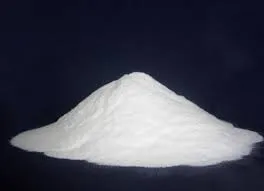The Versatility of Methyl Cellulose and Hydroxypropyl Methylcellulose (HPMC)
Methyl cellulose (MC) and hydroxypropyl methylcellulose (HPMC) are synthetically produced cellulose derivatives that have garnered attention in various industries due to their unique properties and versatile applications. Both compounds are derived from cellulose, a biopolymer found in the cell walls of plants, yet they undergo chemical modifications to enhance their functionality.
Chemical Structure and Properties
Methyl cellulose is created by methylating cellulose, which introduces methoxy groups (-OCH3) into the cellulose structure. This modification alters its solubility, making it soluble in cold water, which is a crucial property for many applications. HPMC takes this a step further by also introducing hydroxypropyl groups (-O-CH(CH3)2), which enhance its thermal stability and water retention capabilities. The degree of substitution—the number of hydroxyl groups replaced by methoxy and hydroxypropyl groups—can be adjusted during the manufacturing process, allowing for customized properties tailored to specific applications.
Both MC and HPMC are non-toxic, biocompatible, and biodegradable, making them attractive options for various industries, including food, pharmaceuticals, cosmetics, and construction.
Applications in the Food Industry
In the food sector, methyl cellulose and HPMC are widely used as food additives. They serve as thickening agents, stabilizers, and emulsifiers, enhancing the texture and mouthfeel of various products. For instance, they are commonly found in gluten-free products, providing the necessary viscosity and moisture retention needed to improve texture and prevent crumbliness. Additionally, their ability to form gels when heated makes them valuable in the production of meat substitutes and plant-based foods, where they can mimic the texture and juiciness typically associated with meat.
methyl cellulos hpmc

Pharmaceutical and Cosmetic Applications
In pharmaceuticals, HPMC plays a critical role as a binder and coating agent in the manufacturing of tablets and capsules, ensuring the uniform distribution of active ingredients while controlling the release rates. Its water-soluble nature and gelling ability also make it an essential component in formulations for eye drops and topical gels, providing lubrication and enhancing bioavailability.
In cosmetics, both MC and HPMC are used as thickening agents in creams, lotions, and gels. Their ability to form a protective film on the skin helps retain moisture, making them popular choices in skincare products. Furthermore, their silky texture enhances the aesthetic appeal of cosmetic formulations, providing a smooth application and improving product stability.
Construction Industry Applications
Beyond food and pharmaceuticals, MC and HPMC have found substantial use in the construction industry. They are mixed with cement, mortar, and plaster to improve workability, adhesion, and water retention. This is particularly important in applications such as tile adhesives, where enhanced performance and extended open time can significantly impact the quality of construction projects.
Conclusion
The significance of methyl cellulose and hydroxypropyl methylcellulose cannot be overstated due to their versatility across multiple industries. Their unique properties, such as water solubility, non-toxicity, and biodegradability, position them as essential ingredients in various formulations. As technology advances and sustainability becomes increasingly vital, the demand for these cellulose derivatives will likely continue to grow, leading to innovative applications and developments. As researchers and manufacturers explore their potential, MC and HPMC promise to remain key players in enhancing product performance and quality across numerous domains.
-
Rdp Powder: Key Considerations for Wholesalers in the Building Materials IndustryNewsJul.08,2025
-
Key Considerations for Wholesalers: Navigating the World of Hpmc - Based ProductsNewsJul.08,2025
-
Hpmc Detergent: Key Considerations for WholesalersNewsJul.08,2025
-
Key Considerations for Wholesalers: China Hpmc For Tile Adhesive, Coating Additives, Concrete Additives, and MoreNewsJul.08,2025
-
Crucial Considerations for Wholesalers: Navigating the World of Construction MaterialsNewsJul.08,2025
-
Key Considerations for Wholesalers Sourcing Additive For Cement, Additive For Concrete, Additive For Putty from Additive Manufacturer Shijiazhuang Gaocheng District Yongfeng Cellulose Co., Ltd.NewsJul.08,2025




